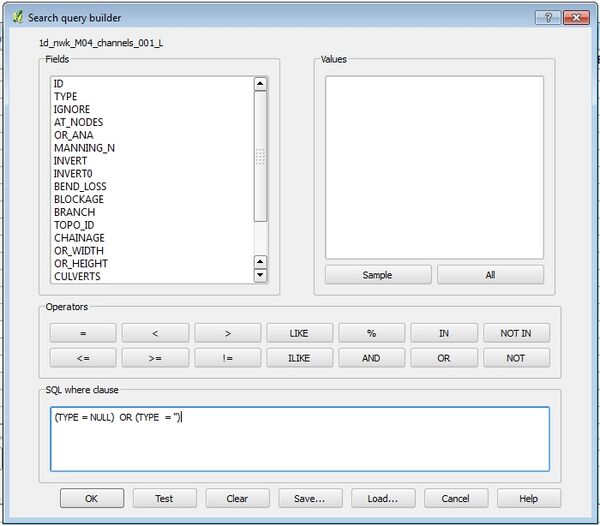Tute M04 QGIS 1d nwk Archive
Introduction
In this section we create the 1D channels. For this tutorial a number of completed channels are provided as a guide. If this was not provided, the method would be open the "1d_nwk_empty_P.shp" file from the TUFLOW\model\gis\empty folder and save this in the TUFLOW\model\gis folder and begin the edits in this layer.
Method
- Ensure the cross-section layer is open.
- Copy the 1d_nwk_M04_channels_001_L and 1d_nwk_M04_culverts_001_Lfiles from the Module_Data\Module_04\gis\ folder and into the TUFLOW\model\gis\ folder you are working in. Open both files in QGIS.
- Make both layers visible and toggle editing on for the 1d_nwk_M04_channels_001_L layer.
- Ensure that snapping to the cross sections and also to the 1d_nwk layer is enabled in Settings >> Snapping Options.
- Zoom in to the south western edge of the model, where the main inflow occurs.
- Using the Add Feature tool, digitise a polyline from the end of the channel provided, along the creek centreline and right click on a vertex of the next cross-section downstream to finish the channel feature. Each channel (from cross-section to cross-section) is required to be a separate polyline feature digitised from upstream to downstream. Don't fill in the GIS attributes yet, we will fill these out at the end. Tip: Using a marker line symbol style with arrows along the polyline makes it easier to ensure the polylines you are drawing are digitised from upstream to downstream.
- At the location of the 1st culvert (in the 1d_nwk_M02_culverts_001_L layer) we need to ensure that the channel snaps to the layer upstream of the culvert. Make sure this layer is open and selectable. At the downstream end of the culvert, ensure that the start of the open channel is snapped to the end of the culvert. In these locations there are three layers snapped together: the culvert, channel and cross-section.
- The first two sections downstream of the channel have been digitised in the layer provided. In this area there is an alternative flow path over a meander in the channel. A secondary weir channel has been digitised in the layer provided. We need to connect this secondary to the main channel. Digitise a line from the upstream end of the weir to the junction of the channels, as shown in the image below.
- Enter "X" into the GIS attribute Channel_Type. This "X", or channel connector, connects the channels together but indicates that the weir is not the main channel path.
- At the downstream of the weir enter another channel "X" connector, starting from the end of the weir and ending at the downstream channel junction.
- Continue digitising channels between the cross-sections. At the second culvert, ensure you snap to each end of the culvert. At the downstream end of the model, snap to the channel provided in the layer.
- Once all the the channel lines have been drawn we will update the GIS attributes. The first thing we need to do is select only the channels that do not have any attributes set. The channels provided as part of the module data already have the correct attributes. To select the channels without a channel Type assigned, we will use the 'look for' function in the attribute table. To access this right-click on the 1d_nwk_M04_chanel_001_L layer in the layers side bar and open the attribute table.
- Open the advanced search and enter the search string below:
- We can now update this selection. To do this click on the Field Calculator icon in the attribute table. In the field calculator dialogue check the Update existing field. From the drop down list select the 'TYPE' attribute to update. Set the expression to:
'S'
- Repeat the update process to update the Use_Chan_Storage_at_Nodes to "T". This tells TUFLOW to automatically calculate the storage at the nodes (ends of the channel) based on the cross-sectional properties and the channel length.
- Update the Mannings_n to 0.09 (don't use quotes because this is a numerical field). Set the Upstream_Invert and Downstream_Invert to -99999.
- To avoid assigning a channel name to each of these channels we will also use the update function to do this automatically. Use the process above to update the ID column of the query table. In the Value enter:
'FC01_'|| tostring( $id )
. This includes the creek ID - "FC01" and then adds a unique feature ID. As these were digitised from upstream to downstream, this value should increase in order from upstream to downstream. - Toggle editing for the 1d_nwk_M04_channels_001_L to off and save the edits.

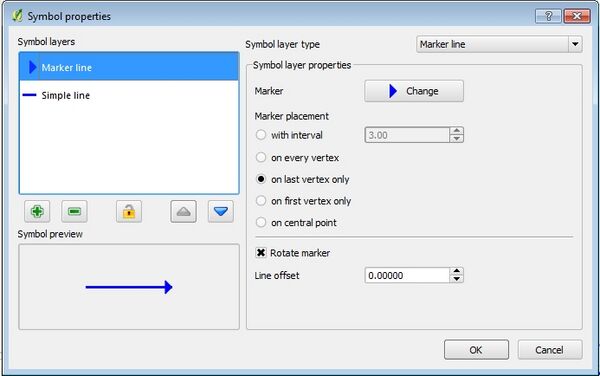
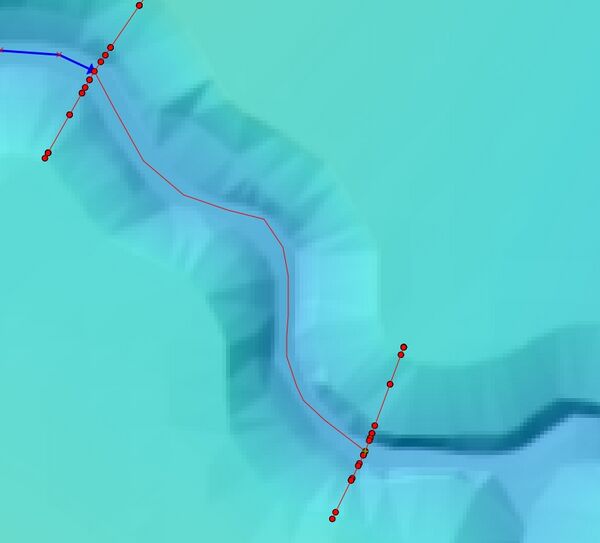
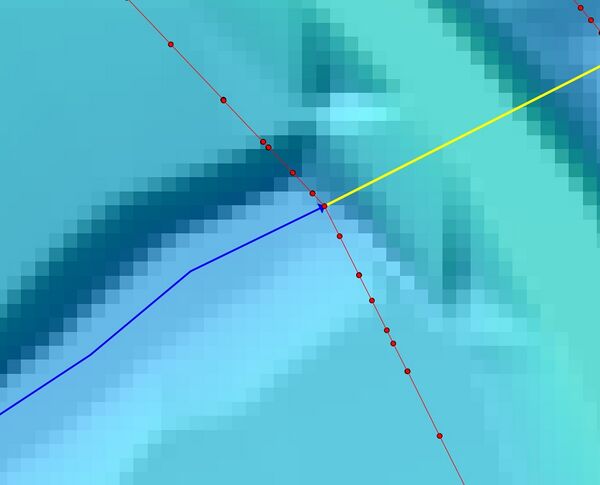
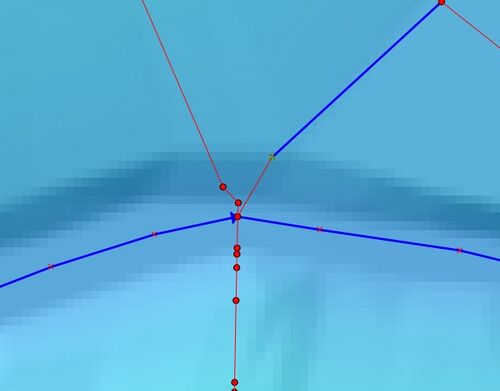
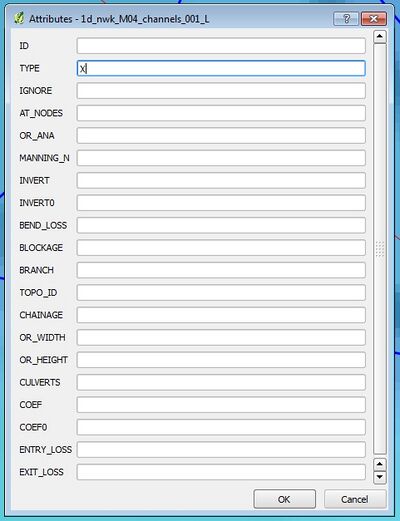
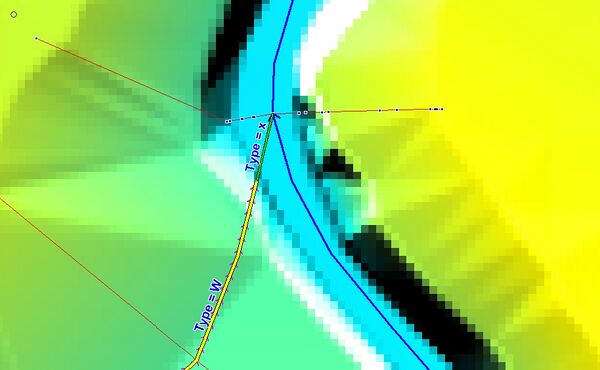
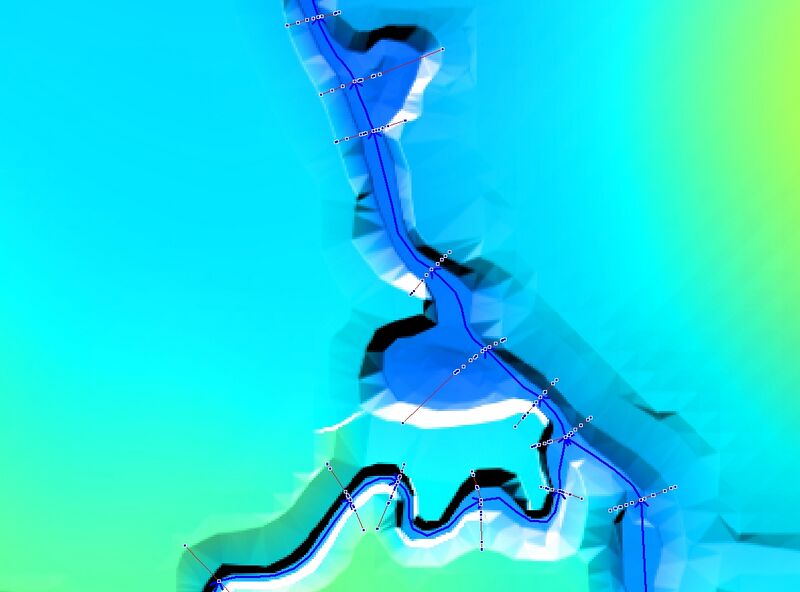
(TYPE = NULL) OR (TYPE = '')
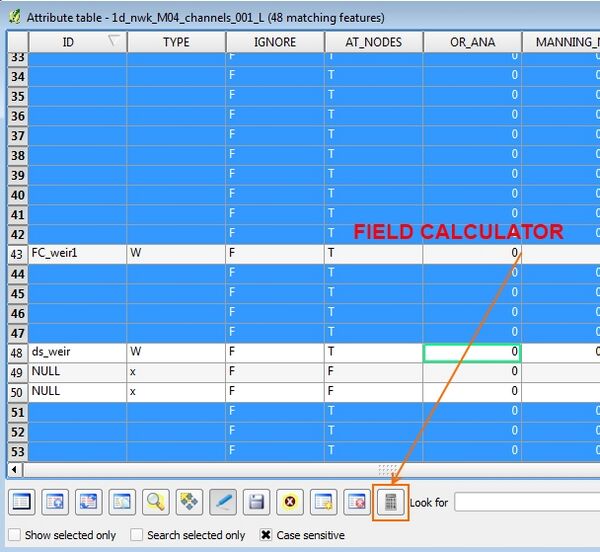
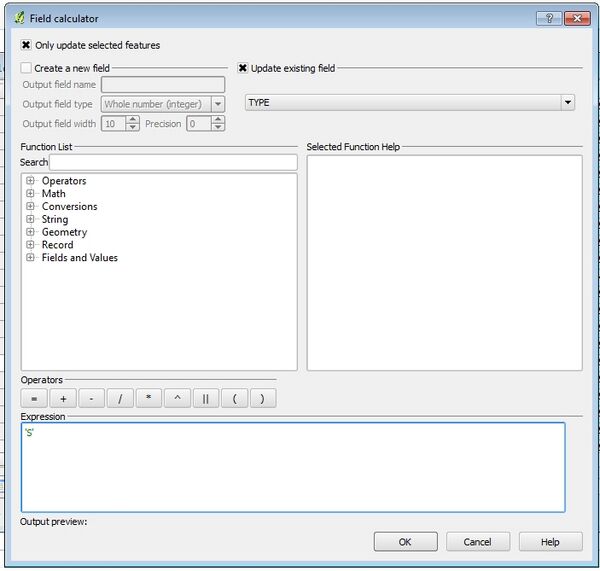
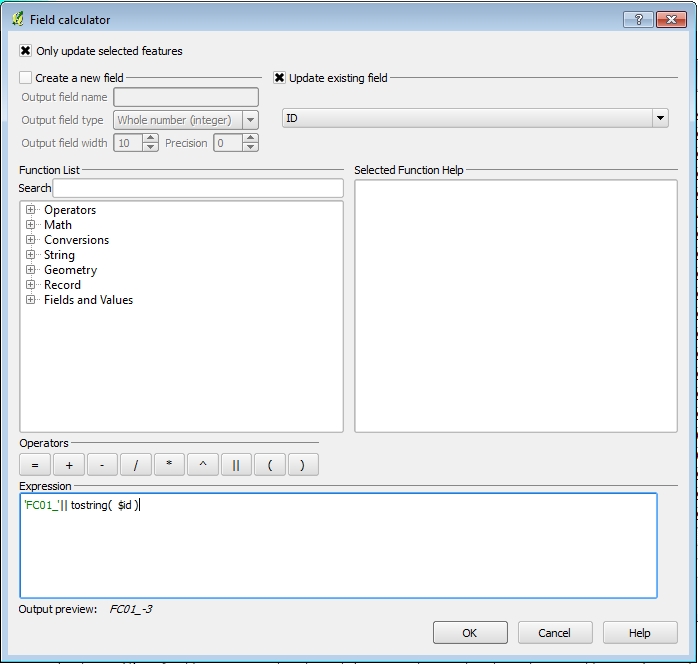
In Tutorial module 2 we created a number of 1D/2D links for the culverts. We did this in a number of ways, one of these was to create the link using a 1d_nwk layer (link to Module 2). Now that we are modelling the entire creek in 1D we need to remove these. As these links are created on the points objects we need only remove the reference to these in the control file. We will detail this in the section on updating the control files.
Conclusion
The 1D network layers are now ready for input into TUFLOW. Please return to the tutorial where the next step is to define the 1d/2d connections.
